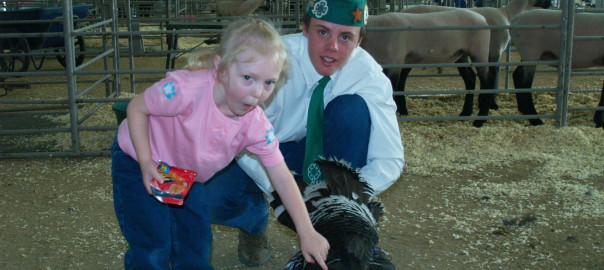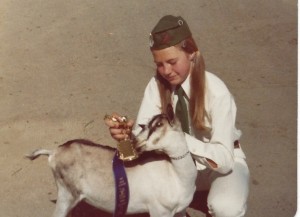The reason our first son began his school career in a Montessori classroom was an innocent sign on the public school kindergarten teacher’s wall that said “Teaching kindergarten is like holding 25 corks underwater all at one time”. I was trying to be a conscientious parent, investigating options and objectively choosing the absolute best for my son, but this image of holding my baby underwater like a cork was just horrifying – plus the public kindergarten had a really awkward schedule that didn’t work for anyone. So with minimal knowledge or conviction about the benefits of Montessori, we started him there. Ironically, when he did go to public school the next year, he got that same teacher for two years and we all loved her. Her little sign was just ambulance humor that did not strike me as funny at the time.
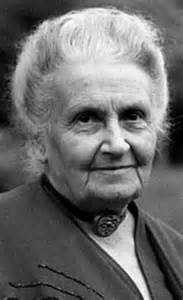 My lack of humor was fortuitous though since I then learned about the brilliant Maria Montessori and her theories of teaching young children. In the briefest nutshell, Montessori determined that young children go through stages of development at their own speed, and if appropriate tools and “jobs” are available to them, they will gravitate to the tasks that teach them the skills that match their developmental window. The children focus on a skill until they master it. It is hard to picture this working out in a classroom setting, but it sure can. The emphasis is on sensory exploration and manipulatives. Lots of manipulatives, which certainly suited my active boys, and in my opinion, suits most kids. Both sons attended Montessori preschool and kindergarten and then moved into a traditional public school My daughter missed the opportunity because we moved, but I had enough indoctrination then to make sure manipulatives were still part of her life. While living on a ranch certainly helped, we made sure all three children benefitted from working with their hands.
My lack of humor was fortuitous though since I then learned about the brilliant Maria Montessori and her theories of teaching young children. In the briefest nutshell, Montessori determined that young children go through stages of development at their own speed, and if appropriate tools and “jobs” are available to them, they will gravitate to the tasks that teach them the skills that match their developmental window. The children focus on a skill until they master it. It is hard to picture this working out in a classroom setting, but it sure can. The emphasis is on sensory exploration and manipulatives. Lots of manipulatives, which certainly suited my active boys, and in my opinion, suits most kids. Both sons attended Montessori preschool and kindergarten and then moved into a traditional public school My daughter missed the opportunity because we moved, but I had enough indoctrination then to make sure manipulatives were still part of her life. While living on a ranch certainly helped, we made sure all three children benefitted from working with their hands.
(While I could, and probably too often do, rant about the focus on screen time in classrooms now, I will skip it. Honest, I will, but I don’t think Maria would have liked it either.)
My point here is that children still need to learn how to do stuff. Real stuff like cooking,
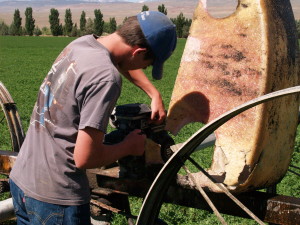
cleaning, fixing engines, making clothes, building, caring for animals, knitting, growing peppers, whatever. It is practical, they can then take care of themselves and others, they learn skills that are helpful to employment, they appreciate when difficult things are done for them, and it gives them confidence. While some good vocational programs and teachers are still around, we can’t expect all that teaching to happen in school anymore, if we ever could.
“Education is a natural process carried out by the child and is not acquired by listening to words but by experiences in the environment.” Maria Montessori
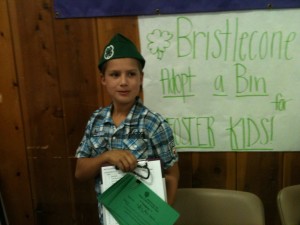
So now is the time to sign up children as 4H members, and adults as 4H leaders. 4H is still a great place to learn how to do real stuff, but its future looks bleak. Membership is dropping because, ironically, so many other opportunities are available. Active kids in supportive homes end up being overscheduled and stressed out trying to take advantage of all these opportunities, which is bad. Some kids don’t get to participate in much at all for hardship reasons, which is also bad. There are strong arguments for all enrichment programs, but for whatever reasons, the practical projects of 4H that are often the first activity to get chopped. There is no team to “let down”, the initial monetary commitment is minimal, and the schedule can be crazy. Then, when a shortage of leaders results in projects getting cancelled midyear or unavailable altogether, kids are less likely to sign up again.
4H is made up of local clubs under the County/State Cooperative Extension umbrella. The real action takes place locally when local adults take on a project. Leaders are all volunteers with the multitude of other commitments we all have, and it gets tough. But, here is my plea, a project can be as little as 6 hours of meeting time, and even with the inevitable prep time, many people COULD fit in 6 to 12 hours of volunteer time. Of course there are higher levels of commitment available and needed too, but PROJECT LEADERS are the most pressing need. Fun projects keep kids interested.
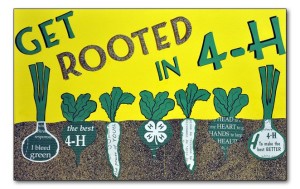 Projects can be very specific, like cord bracelet making or salsa preparation. People have taught beginning dog training, trap shooting, archery, gardening, small engine repair, bread baking, knitting, recycled object crafts, paper airplane making, hiking, creative writing, photography, photo editing, and there are so many more cool ideas. As a kid in 4H, I learned to cook, make sauerkraut and jam, raised dairy goats and lambs, and learned cake decorating (which then became my college job for quite awhile). Projects can be geared towards “mini-members”, ages 5-8, or older members 9 and up. Older members can help as junior and teen leaders. It is not a bad gig!
Projects can be very specific, like cord bracelet making or salsa preparation. People have taught beginning dog training, trap shooting, archery, gardening, small engine repair, bread baking, knitting, recycled object crafts, paper airplane making, hiking, creative writing, photography, photo editing, and there are so many more cool ideas. As a kid in 4H, I learned to cook, make sauerkraut and jam, raised dairy goats and lambs, and learned cake decorating (which then became my college job for quite awhile). Projects can be geared towards “mini-members”, ages 5-8, or older members 9 and up. Older members can help as junior and teen leaders. It is not a bad gig!
Getting to know these great young people and helping them learn practical skills is, in my opinion, the best way to stay optimistic about our future. When you see all the memes and political cartoons bemoaning the problems and gaps in the upcoming generation, you can think, “well at least there’s Josi, Mic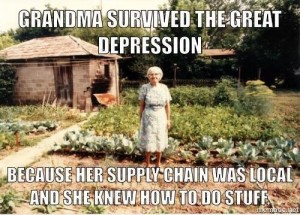 hael, Dani, Jared, Harrison, and ________ that know how to do things.”
hael, Dani, Jared, Harrison, and ________ that know how to do things.”
If you are interested in volunteering as a 4H leader, come talk to me, or the 4H office 760-873-7854. (http://ceinyo-mono.ucanr.edu/4-H_Program/)
If you are interested in the notion of practical learning, here are a few related books. We may not have them on the shelf, but can certainly help you find them! There are many more, and I would love to get your recommendations if you have read some.
 Shop Class As Soul Craft: an Inquiry into the Value of Work by Matthew B. Crawford . This is a philosophical and practical look at why we need to be sure the trades are not forgotten and physical labor is not to be reviled. Crawford now has several more books in a similar theme.
Shop Class As Soul Craft: an Inquiry into the Value of Work by Matthew B. Crawford . This is a philosophical and practical look at why we need to be sure the trades are not forgotten and physical labor is not to be reviled. Crawford now has several more books in a similar theme.
The Mind at Work: Valuing the Intelligence of the American Worker by Mike Rose. Rose investigates what should be obvious, that intelligence and calculation is essential to jobs like waitressing and carpentry. This book is credited with being able to shape both public policy and general opinion.
The Montessori Method by Maria Montessori. Montessori has quite a few books on early childhood development, but this one is a classic. Also check for biographies like:
 Maria Montessori: Her Life and Work by E.M. Standing.
Maria Montessori: Her Life and Work by E.M. Standing.
The Unsettling Of America or What Are People For? by Wendell Berry. Philosopher, cultural critic, poet, and farmer, Wendell Berry always has a lot to say about the need to stay connected to the land and the discipline of work. Any of his works will give you new appreciation for labor.
Deep Economy: The Wealth of Communities and the Durable Future by Bill McKibben This book explores the need to refocus our economy on local production of food, goods, and even entertainment. That requires people who can do things!
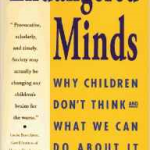 Endangered Minds: Why Children Don’t Think and What We Can Do About It, by Jane Healy. This is a discussion of developmental windows and how missing them affects higher levels of reasoning. I loved this book. This was published in 1991, and things have changed. Healy has quite a few new related books out which likely address these changes, but I haven’t read them myself.
Endangered Minds: Why Children Don’t Think and What We Can Do About It, by Jane Healy. This is a discussion of developmental windows and how missing them affects higher levels of reasoning. I loved this book. This was published in 1991, and things have changed. Healy has quite a few new related books out which likely address these changes, but I haven’t read them myself.
So, from a current 4H leader, and a former 4Her, please consider volunteering. And if not in an organized program, make an effort to teach some children practical skills.
